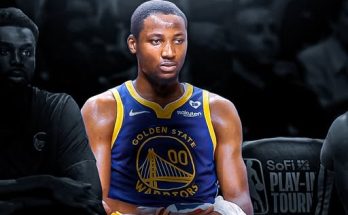The Arizona Cardinals have long been a team on the brink, with moments of promise often drowned out by inconsistency, injuries, and roster holes too big to patch overnight. But with a new regime settling in and a quarterback in Kyler Murray who, when healthy, can still be electric, the 2025 NFL Draft represents a pivotal moment. The franchise holds premium capital—11 total picks, including two first-rounders—and has clear needs, particularly in the trenches. In the latest seven-round mock draft, the Cardinals go all-in on rebuilding their offensive and defensive lines, embracing a blue-collar identity and taking a long view on sustained competitiveness in the NFC West.
Holding the No. 4 overall pick, Arizona is positioned to land a franchise cornerstone. While there’s been speculation about adding a top wide receiver or even trading back, the Cardinals resist temptation and take Alabama offensive tackle Kadyn Proctor, who transfers from Iowa after one year. Proctor has the size, athleticism, and mean streak to be a foundational piece on the left side for the next decade. He’s a plug-and-play starter who could immediately elevate Arizona’s protection for Kyler Murray, helping to both extend the quarterback’s career and reestablish physicality in the run game. The pick isn’t flashy, but it’s a tone-setter.
Arizona’s second pick in the first round, No. 27 overall (via Houston), sees the Cardinals dip back into the trenches—this time on the defensive side—with Texas defensive tackle Byron Murphy II. Undersized but explosive, Murphy is the kind of disruptive interior presence Arizona has lacked since Calais Campbell’s departure. His first step is elite, and he’s capable of generating pressure without sacrificing run defense. Pairing Murphy with last year’s rookie Dante Stills could give the Cardinals a dynamic duo in the middle of their 3-4 front.
With the top of the roster now fortified on both lines, Arizona’s second-round pick (No. 35 overall) allows them to double down. They grab Washington State guard Christian Hilborn, an underrated interior lineman whose tape shows consistent leverage, quick hands, and the ability to reach the second level. Hilborn isn’t a household name yet, but NFL scouts love his upside. The Cardinals have struggled at guard for years, and Hilborn has the traits to finally bring stability. This is the kind of pick that championship teams make—solid, safe, and essential.
By the third round, it’s clear that general manager Monti Ossenfort and head coach Jonathan Gannon are committed to winning at the line of scrimmage. At pick No. 66, Arizona takes Missouri edge rusher Darius Robinson. Robinson’s blend of length, power, and motor makes him a versatile chess piece. He can stand up in odd fronts or play with his hand in the dirt. More importantly, he brings leadership and SEC-tested toughness. Arizona ranked near the bottom of the league in sacks last season. Robinson might not be a double-digit sack artist out the gate, but he’ll help raise the floor of the defense.
Still in the third round, at pick No. 71, Arizona makes one of its more intriguing selections: Georgia center Sedrick Van Pran. A multi-year starter and the anchor of one of college football’s best offensive lines, Van Pran offers experience, football IQ, and physicality. This selection signals a major overhaul of the Cardinals’ offensive interior. With Van Pran at center and Hilborn at guard, Arizona could finally give Murray the clean pockets and consistent run lanes he’s rarely enjoyed. Drafting a center this high isn’t glamorous, but Van Pran brings championship DNA.
Moving into the fourth round, the Cardinals continue to address depth, this time grabbing Notre Dame defensive end Rylie Mills at pick No. 104. Mills is a big-bodied end who fits Arizona’s 3-4 scheme well. He’s not going to rack up sacks, but he eats up space, anchors against double teams, and has the power to push the pocket. Gannon, a former defensive coordinator, loves linemen who can play multiple gaps, and Mills fits that mold. The selection may fly under the radar, but it’s a smart rotational addition that could grow into a larger role.
With two picks in the fifth round, Arizona gets a chance to target upside. First, at pick No. 136, they take Oregon State guard Tanner Miller, further solidifying the offensive line room. Miller is raw, but his size and athleticism make him a worthwhile developmental project. In a best-case scenario, he becomes a starter down the line. At worst, he offers valuable depth at a position that too often gets exposed when injuries hit.
Later in the fifth, at pick No. 161, the Cardinals finally turn their attention to the skill positions, selecting Michigan wide receiver Cornelius Johnson. At 6-foot-3 with long arms and a proven track record against top Big Ten corners, Johnson offers size and catch radius to complement Arizona’s current group of wideouts. He’s not the most explosive receiver, but he knows how to get open and is a willing blocker. If Arizona truly wants to lean into a physical identity, receivers who do the dirty work are essential.
The sixth round is often a dart throw, but Arizona makes it count by grabbing Cincinnati defensive tackle Dontay Corleone at pick No. 188. Nicknamed “The Godfather,” Corleone is a stout nose tackle with elite strength and surprising agility. He may not have the pass-rush juice to stay on the field every down, but his ability to clog lanes and occupy blockers makes him an ideal fit in the Cardinals’ evolving front. With Murphy and Stills providing penetration, Corleone can focus on what he does best—eating space and allowing linebackers to roam free.
In the seventh round, Arizona holds two picks and uses them wisely. At pick No. 227, they select Texas A&M offensive tackle Trey Zuhn III. Zuhn is a swing tackle with starter traits but an inconsistent resume. Injuries and technique issues kept him from blossoming in college, but his frame and athleticism are NFL-caliber. With proper coaching and patience, he could be a valuable depth piece or even push for a starting job down the line. It’s a low-risk, high-reward play.
With their final selection at pick No. 244, the Cardinals go back to defense, nabbing Washington linebacker Carson Bruener. Bruener is instinctual, fast to the football, and has special teams upside written all over him. He won’t wow you with measurables, but he’s a culture pick—a guy who’s constantly around the ball and plays with a chip on his shoulder. Every roster needs grinders, and Bruener fits that bill.
When all is said and done, the Cardinals’ draft strategy in this seven-round mock is clear: dominate the line of scrimmage. Nine of their 11 picks are either offensive or defensive linemen, underscoring a commitment to rebuilding from the inside out. It’s a shift away from the skill-position-heavy approaches of years past, and one that reflects Jonathan Gannon’s desire for toughness and physicality.
Of course, the plan isn’t without risk. Arizona still has question marks at cornerback and could use another top-end pass-catcher, especially if Marquise Brown departs in free agency. But the front office seems confident that foundational strength in the trenches will create a ripple effect throughout the roster. Protecting Kyler Murray and harassing opposing quarterbacks has to be the priority, especially in a division featuring the likes of Matthew Stafford, Geno Smith, and Brock Purdy.
This mock draft won’t generate the buzz of splashy receiver or quarterback moves, but it speaks volumes about how the Cardinals envision their future. In a league increasingly obsessed with speed and spacing, Arizona is zagging—building a team with toughness, depth, and versatility up front. If the picks pan out, it could mark the beginning of a new era in the desert: one where games are won at the line, and the Cardinals are no longer pushed around by more physical opponents.
Arizona still has work to do in free agency, and injuries will always play a role, but with this trench-heavy approach, the Cardinals send a message—they’re ready to fight in the mud and win the hard way. It may not be glamorous, but for a franchise searching for sustained relevance, it’s the right kind of ugly. And sometimes, in the NFL, that’s exactly what it takes.



